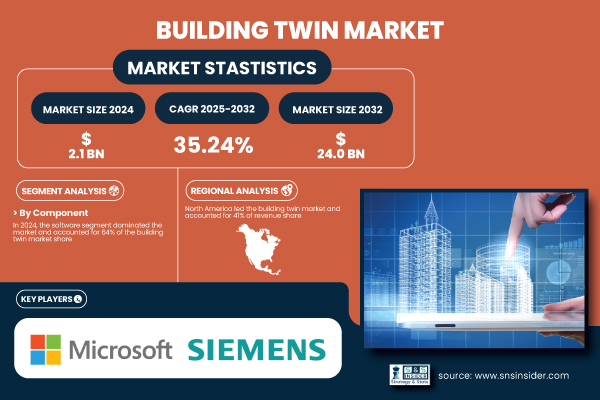AI Sentiment: Bullish
Reason: The Building Twin market shows strong growth potential driven by AI integration and sustainability, indicating a positive outlook for the industry.
The Building Twin market is projected to reach an impressive USD 24.0 billion by the year 2032, according to recent research. This remarkable growth is primarily fueled by advancements in smart infrastructure, the integration of AI, and a significant focus on sustainability. As industries continue to evolve, the demand for digital twin technology is expected to expand exponentially.
Building twins essentially create a virtual representation of physical assets, allowing for enhanced data analysis and management. This technology is becoming indispensable for a range of applications including urban planning, facility management, and construction processes. With the rise of smart cities, the utility of digital twin technology is set to grow, as it enables cities to optimize resources and improve overall efficiency.
Key drivers for this market growth include the increasing adoption of Internet of Things (IoT) devices, which facilitate real-time data collection and analysis. Furthermore, the integration of AI in building twin systems enhances predictive maintenance and operational efficiency, thereby attracting more investments in the technology. As companies recognize the benefits of implementing building twins for better decision-making and operational strategies, the momentum is expected to continue.
Sustainability is another core aspect propelling the building twin market. As organizations aim to reduce their carbon footprints and improve energy efficiency, building twins provide valuable insights into resource consumption and waste management. By enabling better planning and monitoring, this technology supports companies in achieving their sustainability goals.
In conclusion, the future of the Building Twin Market appears robust, driven by technological advancements and a growing emphasis on sustainable practices. As the industry progresses towards a more interconnected and efficient future, stakeholders are encouraged to embrace these innovations for enhanced productivity and environmental stewardship.




